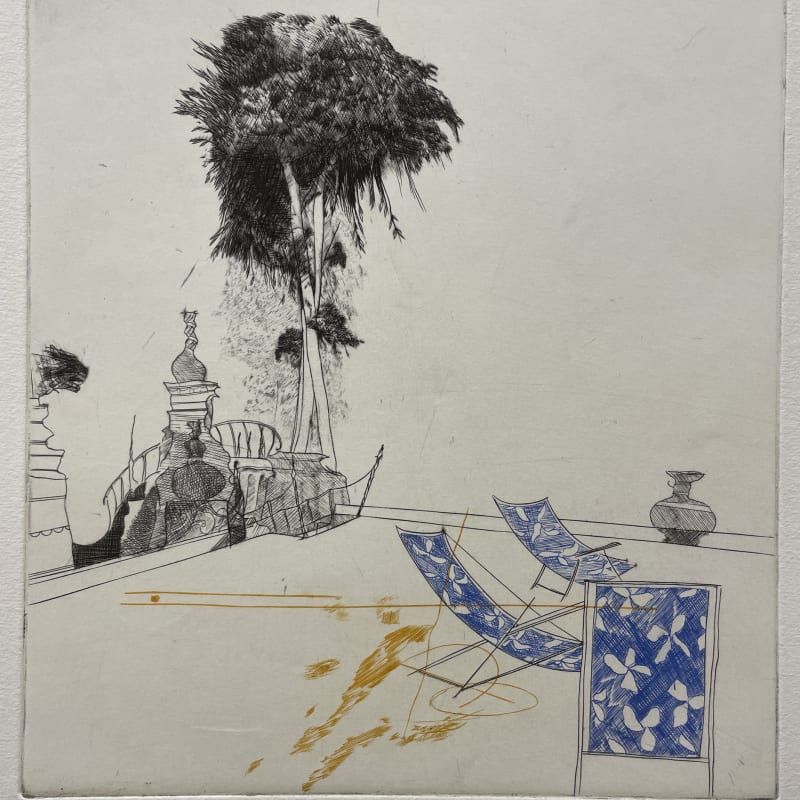A printmaker based in Sweden, Lars Palm's studio is situated in an artist collective, called "Italienska Palatset". Alongside his printmaking practice, Lars Palm currently works part time as a teacher at a primary/secondary school with an aesthetical profile and his work there is mainly concentrated around issues concerning Art and knowledge.
He says of the process of making his work
"The slow and unrushed process of engraving is a way of working diametrically opposed to the speed and haste of our modern time. To engrave on a copperplate and thus create a picture, marks itself as a contrast to the rapid pace it takes to snap, produce, and print digital images. But by indulging oneself in this somewhat anachronistic and unfashionable craftsmanship, one also gets a glimpse of that which pertains to our time, and so further empowers us to reflect and discuss the quality of images as such. It is through this reasoning that the old art of engraving becomes relevant once again, albeit on different conditions, and captures the idea of slowness as an act of resistance. To engrave is for me to wholly devote myself to create that peculiar line which eventually builds the entire copperplate. Or, to put it in another way, it is rather the cut in the copper that creates the conditions for the line to emerge and persist. It is an act of bestowing the line form, character, and meaning. Together, the lines seem to emerge polyphonically as voices: some are yelling, others whisper, some are skewed while others stand erect, and some appear utterly unobtrusive"
He has had several solo exhibitions in Sweden, and has work in Stockholm Council Art Collection, National Swedish Art Council and represented at 20 public and regional collections across Sweden.
He says of the process of making his work
"The slow and unrushed process of engraving is a way of working diametrically opposed to the speed and haste of our modern time. To engrave on a copperplate and thus create a picture, marks itself as a contrast to the rapid pace it takes to snap, produce, and print digital images. But by indulging oneself in this somewhat anachronistic and unfashionable craftsmanship, one also gets a glimpse of that which pertains to our time, and so further empowers us to reflect and discuss the quality of images as such. It is through this reasoning that the old art of engraving becomes relevant once again, albeit on different conditions, and captures the idea of slowness as an act of resistance. To engrave is for me to wholly devote myself to create that peculiar line which eventually builds the entire copperplate. Or, to put it in another way, it is rather the cut in the copper that creates the conditions for the line to emerge and persist. It is an act of bestowing the line form, character, and meaning. Together, the lines seem to emerge polyphonically as voices: some are yelling, others whisper, some are skewed while others stand erect, and some appear utterly unobtrusive"

